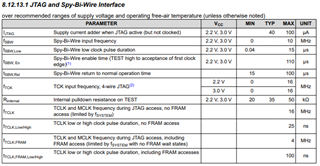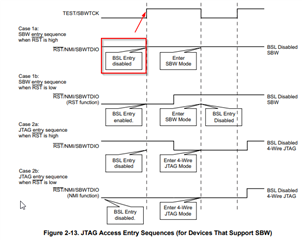Other Parts Discussed in Thread: UNIFLASH, MSP-FET, , MSP430FR5994
Hello,
We are having a problem with the CryptoBSL entry sequence not consistently functioning.
1) Standard Reset -- fails to reset MCU, 12us duration on RST
Note: the time between resets was varied by 1 - 5 seconds
2) Standard Reset -- fails to reset MCU, 12us duration on RST
3) CryptoBSL Entry Sequence -- fails after polling 0x48 for 50ms (ACK failure)
4) Standard Reset -- success, 12us duration on RST
5) Standard Reset -- fails to reset MCU, 12us duration on RST
6) Standard Reset -- fails to reset MCU, 12us duration on RST
7) CryptoBSL Entry Sequence -- success after polling 0x48 for 10ms
8) Standard Reset -- success, 12us duration on RST
9) Go to step 1
1) Standard Reset -- success, 12us duration on RST 2) Standard Reset -- success, 12us duration on RST 3) CryptoBSL Entry Sequence -- success after polling 0x48 for 10ms 4) Standard Reset -- success, 12us duration on RST 5) Go to step 1
Thank you so much in advance for you help with this!











